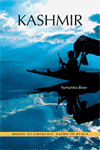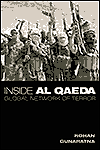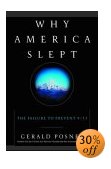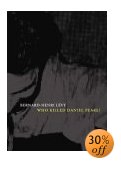|
|
BOOK REVIEW
The Kashmir
conundrum
By Chanakya Sen
A Review of
Kashmir. Roots of Conflict, Paths
to Peace, by Sumantra Bose

Conflict in Kashmir is a conundrum that
begs serious in-depth analysis taking into account every stream of
opinion and identity. Sumantra Bose's ambitious new venture, Kashmir.
Roots of Conflict, Paths to Peace calls for according "equal
legitimacy" to the multiple strands of allegiances over Kashmir and to
accommodate them all in a skillful compromise. Bose's preoccupation is
with "reframing the Kashmir question as a challenge for democratic
politics" and building a polity that makes up the democratic deficit.
The cultural, social and religious multiplicity of Jammu and Kashmir
(J&K) has engendered prismatic and fragmented political orientations.
"J&K as a whole resembles the Russian matryoshka doll - layers of
complexity which render easy solutions such as plebiscite or partition
impracticable and call for a more sophisticated approach." (p 12) The
"self" in "self-determination" is differentiated into umpteen political
aspirations, all of which need to be co-opted into an inclusive
framework for peace. Bose proposes a multinational settlement which
recognizes the diverse national and quasi-national identities prevailing
within J&K, while respecting the core territorial concerns of the Indian
and Pakistani states.
For Sheikh Abdullah, Kashmir valley's most popular politician who
aligned with India due to exigency in 1947, "Kashmir and India were
fraternal but ultimately separate entities." (p 23) His brand of
"regional patriotism" based on the Muslim heritage of Kashmir did not
quite match his National Conference's avowed secular nature, a
contradiction Bose fails to extrapolate. The author does admit that
Abdullah contributed to the entrenchment and perpetuation of
anti-democratic politics in J&K. His intolerance of J&K's plural
character led to police crackdowns against minority communities from
Jammu and Ladakh. His 1951 constituent assembly elections "made a
mockery of any pretence of a democratic process". (p 55)
While Abdullah was no democrat, Bose attributes the root cause of the
current conflict to the New Delhi-sponsored systematic subversion of
democratic rights and institutions in J&K. The heavily manipulated 1987
assembly election in J&K was "no aberration, it was entirely consistent
with Kashmir's political fate in India's democracy over the preceding 40
years". (p 50) At this point, Bose does not halt to consider if dubious
elections in J&K were any different from the violent and coercive
elections in other states of India, say Bihar or Uttar Pradesh, over the
preceding 40 years. His contention that democracy, by and large, was
respected with "imperfections" in other parts of India lacks empirical
substantiation.
Bose maintains that khudmukhtaari (self-rule/autonomy) lies at
the heart of India's checkered relationship with J&K. Sheikh Abdullah
retained a "subliminal attachment to the idea of a sovereign Kashmir",
though anti-autonomy and pro-integration voices were raised in Jammu and
Ladakh. In 1953, Abdullah shifted to a confrontational pro-independence
strategy and was dismissed and incarcerated for 22 years in Indian
prisons. His replacement, Bakshi Ghulam Mohammed, eroded J&K's autonomy
and allegedly buried Article 370 of the Indian constitution that granted
special status to the state. Bose writes off Article 370 as "dead in
letter and in spirit" since 1954, but it has never been dead as far as
the crucial prohibition of non-Kashmiris owning property or setting up
businesses in J&K. It is this caveat that prevented internal
colonization and demographic reengineering in J&K on the lines of
Pakistani Kashmir or Chinese Tibet.
The 1965 dissolution of the National Conference and its merger into
India's ruling Congress party is depicted as "the end of the road for
Article 370", again a misjudgement because the article has no bearing on
the dalliances of political parties in J&K. Bose also castigates the
appointment of non-Kashmiris in administrative service of J&K without
cognizance of the basic fact that, to occlude favoritism and vested
interests, India's professional civil servants are rarely allotted home
state postings.
Bose further errs by writing that in the 1965 war over Kashmir,
Pakistan's ambitious operation failed as the "fullest cooperation of
local Muslims was not forthcoming on the expected huge scale". (p 84)
Such a sentence misleads, because far from cooperating, J&K locals
assisted the Indian army in apprehending infiltrators. The duality of
mindsets in the Kashmir Valley, where on one hand the majority wanted to
be separate from India and on the other hand prevented Pakistan's
forcible takeover, remained intact until 1988.
During the end of the Afghan jihad in the late 1980s, the Kashmir
conflict entered a new phase characterized by mass estrangement of J&K's
population from India. In 1990, governmental authority collapsed in the
Valley as insurrection took hold. An "occupier-occupied relationship"
emerged between the Indian state and the Valley's people. Young Kashmiri
men crossed into Pakistan, gained weapons and combat training and
returned to Indian Kashmir to organize a spate of targeted killings of
known or suspected "Indian agents".
The Jammu Kashmir Liberation Front (JKLF), which dominated the early
phase of violent insurgency, drew inspiration from "the valley's
specific Islamic traditions" though averring that its attitude towards
non-Muslims was non-sectarian. Bose accepts on face-value JKLF's defense
that three-fourths of its victims were Muslims and only one-fourth were
Kashmiri Pandits, the Valley's Hindu minority. Considering that Pandits
comprised barely 4 percent of the populace in the Valley, their
assassination rate was disproportionately high. Bose also fallaciously
calls the mass exodus of Pandits in 1990 due to terrorist threats
"propaganda". He supports this perfunctory argument by attesting that
Muslim neighbors protected the handful of Pandits who stayed in the
Valley. Survivors' families have now documented how far many more
Pandits were actually handed over to assailants by neighbors. Bose never
seemed to have heard of the rallying cry in 1990 - Kashmir me rehna
hain to Allah-o-Akbar Kehna Hai (If you want to live in Kashmir, worship
Allah).
If the JKLF was indeed "secular", then how is one to explain the playing
of the azaadi (freedom) card into the hands of the Pakistani
state's surrogates like Hizb-ul-Mujahideen by 1994? If the early "intifada"
phase was indeed secular, how could zealot Pakistan-centered Islamist
outfits like Harkat-ul-Ansar take over the entire momentum of fighting
in J&K so suddenly? Bose, who has conducted field visits to J&K, states
that pro-Pakistan views constitute a minority opinion in the state, but
fails to explore why thousands of Kashmiri youth joined ISI (Pakistan's
Inter-Services Intelligence) brainchild organizations alongside
"foreign/guest militants".
Since the late 1990s, Pakistan-based terrorist groups have launched more
than 55 deadly fedayeen attacks (suicide missions) in J&K and other
parts of India. Bose is sanguine to the reality that suicidal warfare is
"not exclusively a cross-border phenomenon", but involved
Kashmiri-speaking local Muslims. In Muslim-majority Rajouri and Poonch
districts of Jammu also, "the rhetoric of jihad has had some effect" on
local youth. (p 157) In guerrilla ranks that were killed after 1990, the
overall local-to-foreigner ratio stands at 70-30, a statistic that
should have led Bose to examine the sinuous ascent of religious
fundamentalism in J&K.
Vetting existing solutions, Bose rejects a plebiscite as an obsolete
idea that is infeasible because India is against it and Pakistan has no
genuine commitment to it. Independent statehood for Kashmir based on a
plebiscite is a "rigid monolithic conception" likely to herald a
countdown to all-out civil war owing to its winner-takes-all
dispensation. Bosnia's 1992 sovereignty plebiscite unleashed bloody
partition and ethnic cleansing Europe hasn't witnessed in half a
century. The Good Friday agreement's plebiscitary clauses in Northern
Ireland are also rife with inflammatory possibilities, jeopardizing the
losers' future.
Converting the Line of Control (LoC) into a de jure international
border is dismissed by Bose as "astonishingly naive" as "no Pakistani
regime or leader can or will accept it". (p 179) Summary treatment of
this scheme reveals Bose's misreading of history. In 1972, premier
Zulfiqar Ali Bhutto did accept the selfsame legalization of the LoC in a
secret protocol to the Simla Agreement with his counterpart, Indira
Gandhi.
The Hindu nationalist solution of trifurcating J&K on religious majority
basis by carving out Kashmir, Jammu and Ladakh as separate
administrative entities within India is rightly described as "incendiary
and counter-productive". If such a plan were to be implemented, the
logic of the 1947 partition of the sub-continent would be replicated
with attendant mass displacements and violence.
Bose's own model for peace calls for a process that accepts all
competing identities and rejects none - "a strategic compromise between
opposed perspectives". (p 208) Rival political preferences
(pro-independence, pro-India and pro-Pakistan) must coexist in mutual
recognition and tolerance, ie "consociation" similar to the Northern
Ireland agreements.
At the Track 1 level, Bose recommends an institutionalized permanent
inter-governmental India-Pakistan council on Kashmir. Cross-border
terrorism and the changed geopolitical climate after September 11, 2001
render chances of achieving this rather slim. Bose, who has authored a
separate book on Sri Lanka's ethnic conflict, could have adduced the
comparative example of vast improvement in India-Sri Lanka relations
once India disentangled itself in 1991 from the Liberation Tigers of
Tamil Eelam. India-Pakistan relations can improve dramatically if the
jihad tap is plugged in Islamabad.
At the Track 2 level, Bose seeks a representative and accountable
political framework in J&K to ensure minimum quality of governance. He
supports "maximum devolution of decision-making powers from the center"
to approximate the pre-1953 division of powers between autonomous J&K
and federal India. However, no realistic safeguard is provided for India
to prevent "maximum autonomy" from degenerating into Sheikh
Abdullah-style majoritarian autocracy-cum-secessionism that would today
be openly Islamist unlike in the pre-1953 era. A corollary change Bose
tables is narrowing inter-regional and intra-regional differences among
Kashmir, Ladakh and Jammu. Simultaneously, Bose calls for an inclusive
and representative order in Pakistani Kashmir where severe restrictions
on freedoms "need to be minimized". (p 255) This is another woolly
headed proposition, as Islamabad faces no armed revolt abetted by a
neighboring country in "Azad" (Free) J&K to concede any liberties.
Still on Track 2, Bose wants "an acknowledgement by the government of
India that large-scale abuses have occurred, and that these are
regretted". (p 258) Typically, he sidesteps a corollary apology from
jihadi terrorists who have acted brutally on civilians of all hues in
J&K in the name of azaadi.
Track 3 in Bose's design requires transformation of the LoC "from an
iron curtain to a linen curtain", ie cross-border economic and cultural
linkages between Indian Kashmir and Pakistani Kashmir. In the current
scenario of relentless infiltration by holy warriors into Indian Kashmir
from the other side, this suggestion too fails to convince. If "soft
borders" are not preceded by genuine decommissioning and laying down of
arms by jihad outfits based in "Azad" J&K, they would augur more
violence and infiltration of illegal human and materiel cargo.
To sum it up, Bose has invested rational intellect and humanist thought
into this venture, but at numerous junctures headed off on unilinear
paths motivated by sheer subjectivity. Total lack of reflection on
radical Islam and its effects on Kashmir especially disappoint the
reader. The book is still worth reading as a 'liberal' shot at mapping
out the Kashmir maze.
Kashmir.
Roots of Conflict, Paths to Peace by Sumantra Bose, Sage
Publications India, 2003, Delhi. ISBN: 81-7829-328-5, price: US$6, 307
pages.
|


